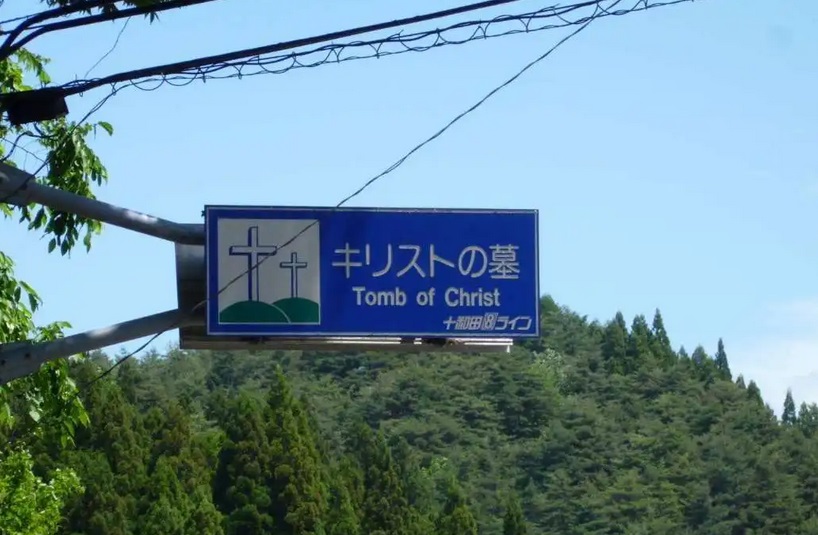The little-known legend of Japan’s ‘Tomb of Christ’
In the cold but placid north prefecture of Aomori lies the charming village of Shingo, a place steeped in a mystery as profound as it is intriguing.
Jan 10, 2024

By Cristian Martini Grimaldi
In the cold but placid north prefecture of Aomori lies the charming village of Shingo, a place steeped in a mystery as profound as it is intriguing. This village harbors an attraction that stands at the crossroads of folklore and religion, history, and fantasy, the supposed 'Tomb of Christ.'
First brought to public attention in 1935, this claim has since woven itself into the fabric of the village's folklore, offering a narrative that diverges markedly from the canonical accounts of Jesus Christ's life and demise.
Central to this narrative is the legend of Christ's 'lost years,' a period conspicuously absent from the New Testament.
According to local myth, these years were not spent in obscurity in the Middle East but in a far more unexpected locale: Japan. It is believed that at 21, like many other missionaries to come, Jesus embarked on a journey to Japan, seeking theological enlightenment, only to return to Judea 12 years later.
The twist in the tale comes with his alleged crucifixion, where, as the story goes, he escapes death by substituting his brother, Isukiri, in his stead. This act of subterfuge led him back to the tranquility of Shingo, where he purportedly lived a long life as a garlic farmer, reaching the age of 106.
The physical manifestation of this legend is an earthen burial mound in Shingo, claimed to be Christ's final resting place. Unearthed in the 1930s by a painter and a cult leader, this site, despite its mythological foundations, has become a tourist attraction and of interest to pilgrims.
Annually, the village, which remarkably only has one Christian resident, performs rituals at this mound, highlighting its significance in the community's cultural and spiritual life. Adding layers to this enigma are certain unique customs historically observed in Shingo.
Toga-like robes and the marking of newborns with charcoal crosses are cited by some as remnants of Jesus' alleged stopover in the village.
Yet, these intriguing practices notwithstanding, there exists no historical or archaeological corroboration for the claim that Jesus lived or was interred in Japan. The predominant academic and theological consensus continues to situate Jesus' life and death firmly within the boundaries of what is now modern-day Israel.
This tale of Shingo's 'Tomb of Christ,' while ostensibly far-fetched, offers a fascinating glimpse into how folklore and community narratives can intertwine, giving rise to unique cultural phenomena.
The story, more than anything, is a testament to the village's ability to integrate and celebrate a blend of folklore, religious symbolism, and community tradition. It is less an assertion of historical fact and more a reflection of the village's rich tapestry of storytelling, which continues to draw the curious and the contemplative alike.
This story is also a fascinating example of Japan's syncretic approach to religion, a concept where multiple belief systems coexist and intermingle harmoniously. This approach is deeply embedded in Japanese culture and is primarily evident in the relationship between Shintoism and Buddhism, the country's main religions.
Rather than existing in competition, these religions often complement and enrich each other, with many Japanese people observing practices from both faiths. This blending is indicative of a broader cultural openness in Japan to different religious ideas and narratives.
It's not about the literal adoption of Christian beliefs but rather an appreciation and incorporation of its elements into the existing spiritual and cultural milieu.
Japan is renowned for seamlessly integrating foreign influences into its unique cultural fabric. Western fashion, for example, has been transformed into distinct Japanese styles like Harajuku, influencing global fashion trends. Indian curry evolved into Japan’s milder kare raisu, a beloved national dish.
Christmas, though not a religious holiday in Japan, is celebrated uniquely, with traditions like eating KFC chicken. Japan’s adoption of jazz led to the development of a distinctive Japanese jazz scene. Probably most famous is the country’s adaptation of Western animation and comics that resulted in the globally popular anime and manga. And the list could go on.
The story of Christ in Japan doesn't aim to redefine religious beliefs but rather illustrates the fluidity with which Japanese culture can assimilate and reinterpret various religious concepts, making them part of a unique, local spiritual tapestry.--ucanews.com







Total Comments:0